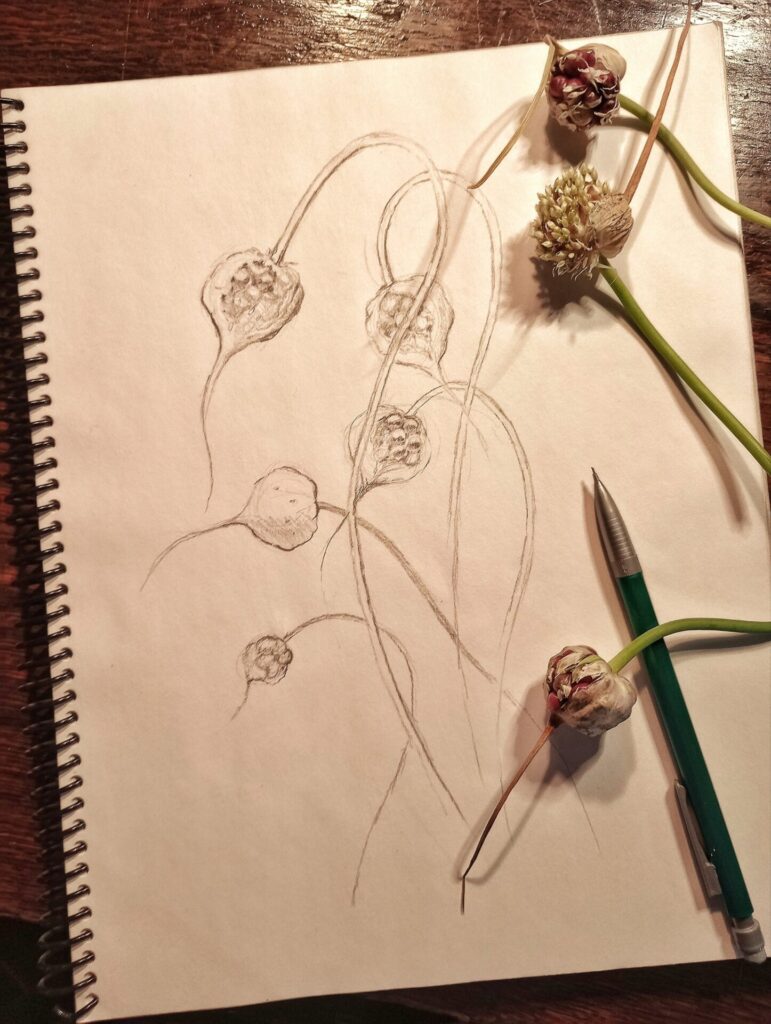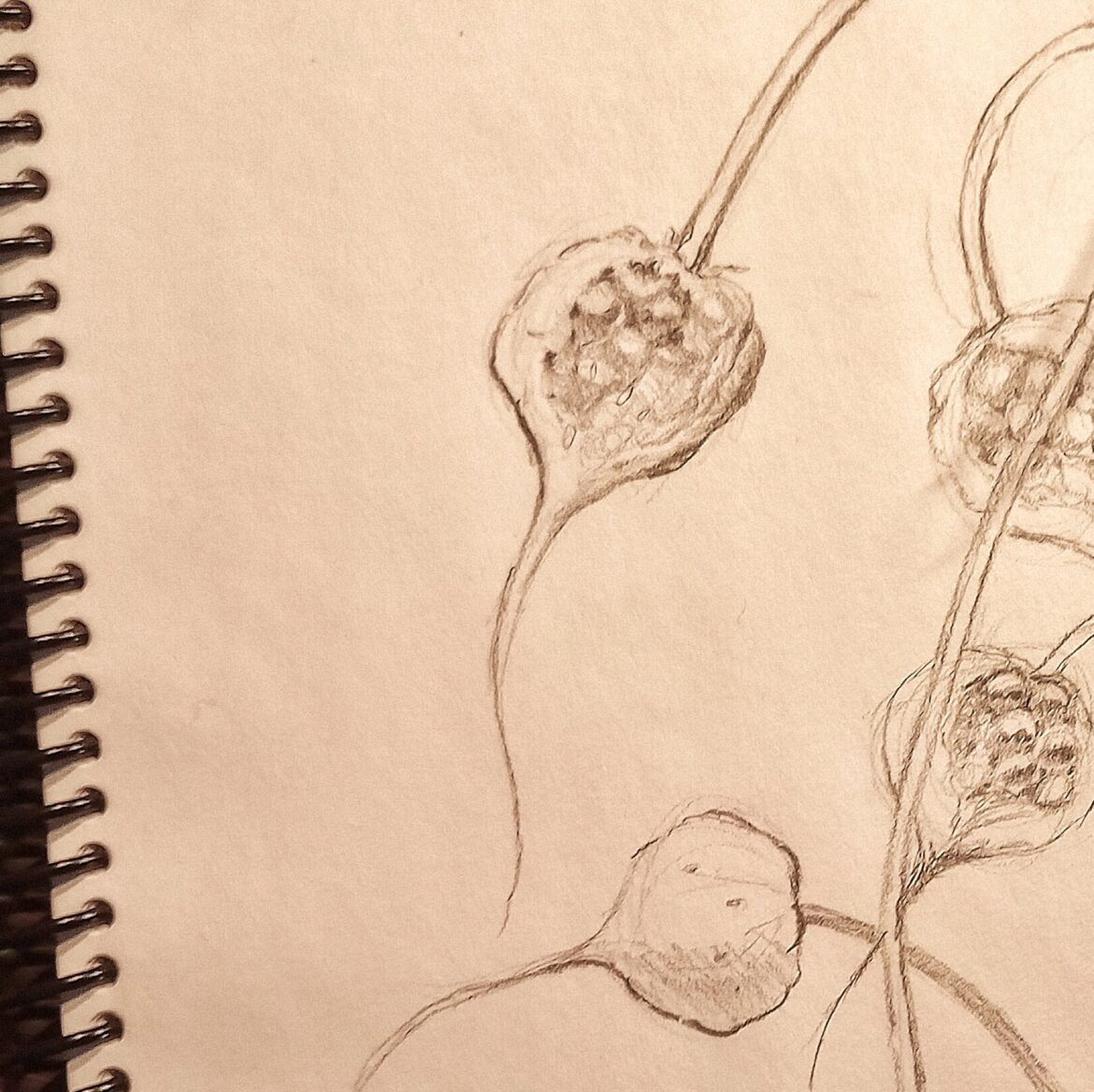I find that gardening complements my creative practice beautifully. Not only does being outside amongst the plants inspire me and bring wildlife in, but nurturing my garden is an act of artistry in itself. There’s something very satisfying about digging in the soil, planting seeds, and watching nature flourish thanks to a bit of care and patience.
Hardneck garlic is one of my favorite plants to grow in my garden. I currently have several different hardneck garlic varieties planted, including Chesnok Red, German White, German Red, Lyubasha, and Duchess. These varieties are known for being more cold hardy than softneck garlic, making them ideal for the cold weather we have here in Minnesota.
In midsummer, the hardneck garlic plants send up an elegant curly flower stalk called a “scape.” The scapes are completely edible and can be used like garlic cloves. I like to harvest some of the scapes while they are still young and tender to use for pesto or stir fries. If left on the plant, the scapes will eventually produce a cluster of small bulblets at the top called a “bulbil head” that is also a culinary treat. These bulbils can be planted to grow into new garlic plants, however they take a few years to reach full bulb size.

By late summer, the lower portion of the stem begins to swell with the familiar garlic cloves. Hardneck garlic tends to have fewer, larger cloves compared to softneck varieties. The cloves and bulbs of hardneck garlic also tend to be more colorful, with hues of purple or red and has a more complex, pungent flavor compared to regular supermarket garlic. Growing garlic is very rewarding. These unique varieties add beautiful diversity to my garden and wonderful intense garlic flavor to my cooking.
For any home gardener, cultivating colorful, hardy garlic varieties like these can be an immensely rewarding experience – not just for the kitchen. By growing your own garlic sustainably, you’ll enjoy amazingly fresh and flavorful cloves while avoiding the environmental impacts of commercial farming and shipping while reducing your food miles and excess packaging. Propagating garlic from bulbils or cloves season after season eliminates the need to purchase starters every year. And as a perennial plant that deters pests, garlic is a low-maintenance, eco-friendly crop. So go ahead – plant some hardneck garlic this fall. You’ll be rewarded with a sustainable harvest that brings beauty and taste to your garden and plates.
